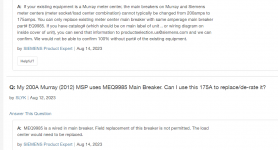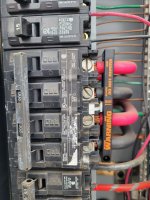I don't like the idea of needing to do this, but this is one possible work-around to a bad situation where you don't have enough headroom on the 120% rule to interconnect in an existing panel. While it's a legal solution, a big problem is that the main panel will become a panel with lots of vacant spaces, and future users will just ignore the "do not add loads" label anyway.
The idea is that you make the main panel in its new configuration, a panelboard that can comply under the sum of breakers rule. Could be just 1 qty 200A branch breaker, could be subfeed lugs feeding a panel with a main breaker. Then, the ONLY, or one of the very few branch breakers within it, supplies a feeder to the new distribution panel. At that new distribution panel, you configure it to qualify under the 120% rule and opposite end supply.
It isn't necessarily all the loads, but more than likely will be close to all the loads. It could for instance, be 2 qty 100A breakers, leading to A) a 200A subpanel with the interconnection, and B) a 100A subpanel for everything else. It could be a 150A branch breaker leading to the 200 busbar subpanel with the interconnection, and up to 50A worth of branch breakers remaining in place.
BTW, it's the busbar-by-busbar sum, that matters, so you would add up the L1 breakers in one column, and add up the L2 breakers in another column, and treat these sums independently of each other. 2-pole breakers get added to both columns.



